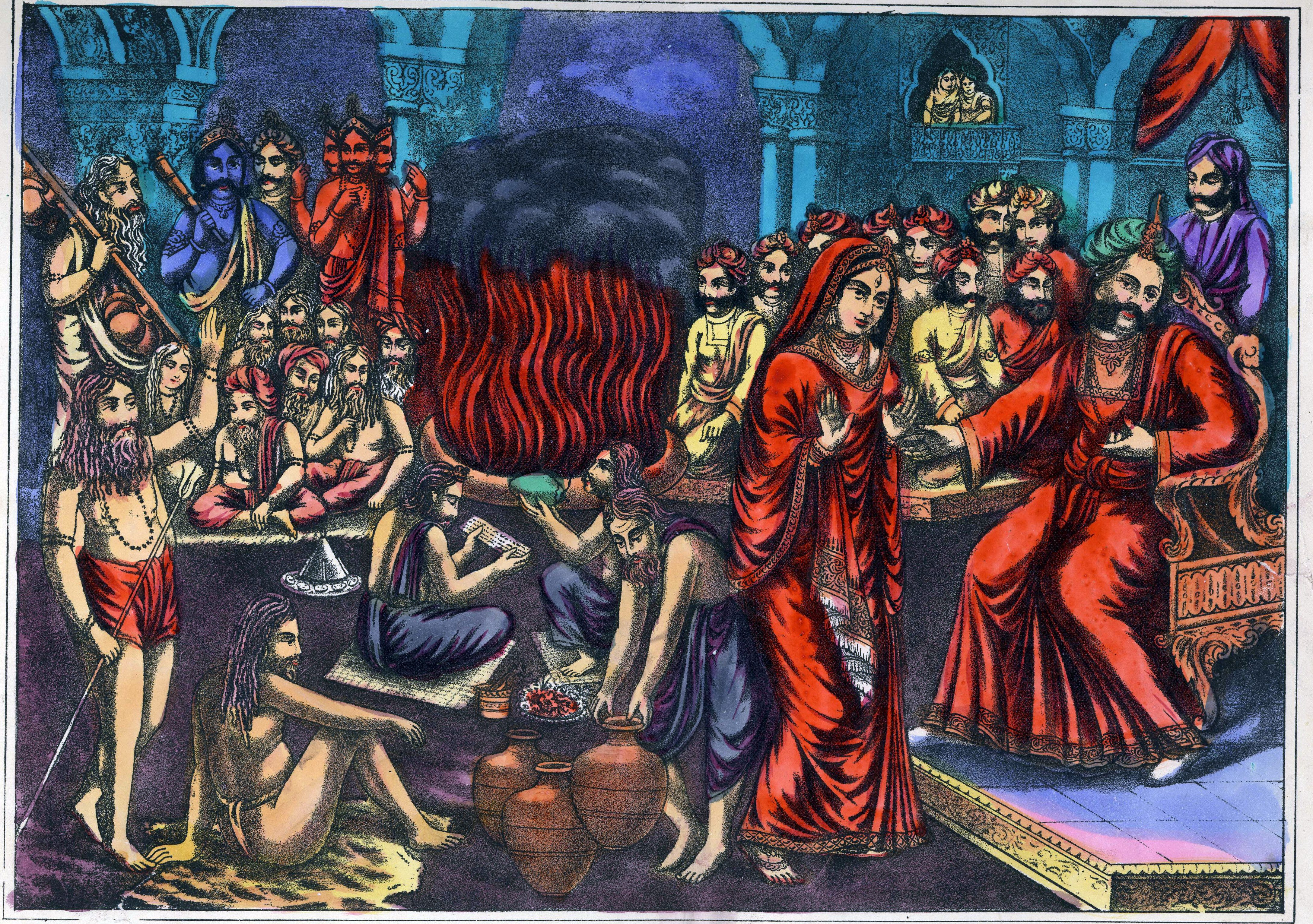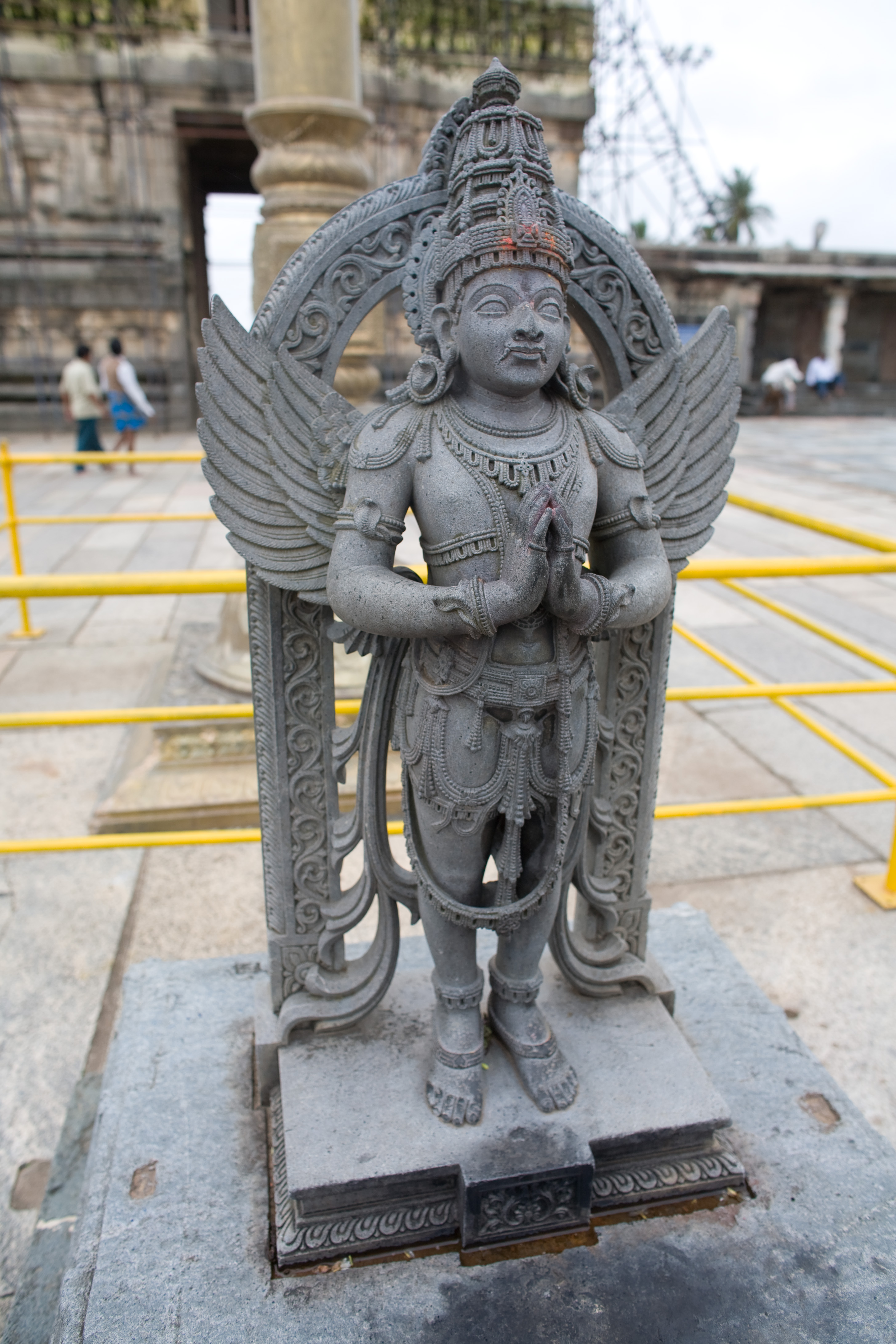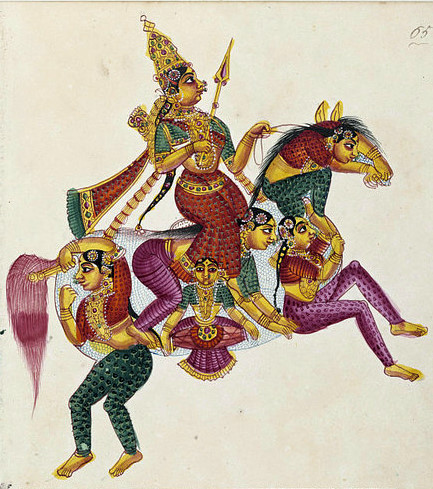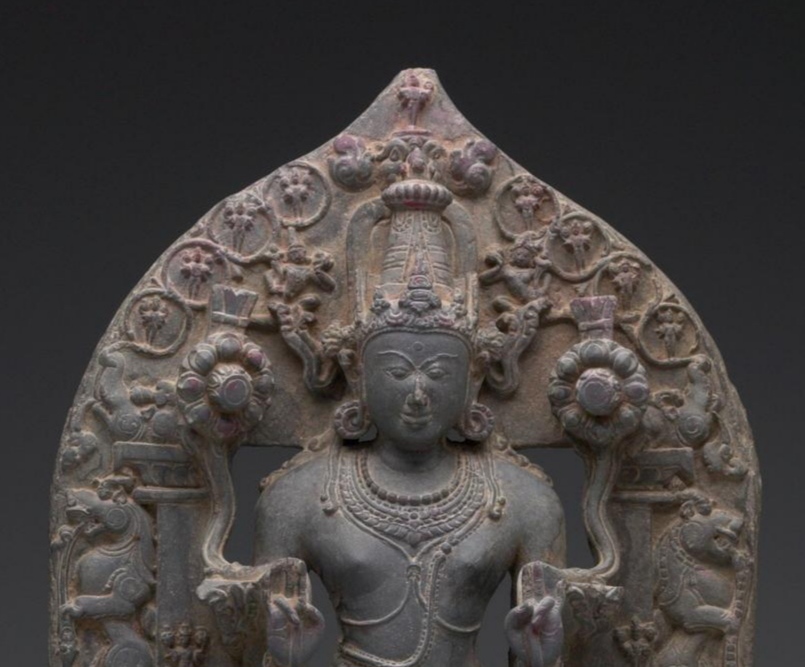|
Daksha
Daksha ( ,) is a Hindu god whose role underwent a significant transformation from Vedic mythology, ''Vedic'' to Itihasa-Purana, ''Itihasa-Puranic'' mythology. In the ''Rigveda'', Daksha is an ''Adityas, aditya'' and is associated with priestly skills. In the epics and Puranas, ''Puranic'' scriptures, he is a Mānasaputra, son of the creator-god Brahma and one of the ''Prajapati#"Prajapati" as a title, Prajapati'', the agents of creation, as well as a divine king-rishi. He is the father of many children, who became the progenitors of various creatures. According to one legend, a resentful Daksha conducted a Daksha yajna, yajna (fire-sacrifice), and deliberately did not invite his youngest daughter Sati (Hindu goddess), Sati and her husband Shiva. In the Linga Purana, for insulting Shiva during this event, which caused Sati to self-immolate in fury, he was beheaded by Virabhadra, an attendant of Shiva. He was later resurrected with the head of a goat. Many ''Puranas'' state that ... [...More Info...] [...Related Items...] OR: [Wikipedia] [Google] [Baidu] |
Daksha Yajna
Dakṣayajña is an important event in Hindu mythology that is narrated in various Hindu scriptures. It refers to a yajna (ritual-sacrifice) organised by Daksha, where his daughter, Sati, immolates herself. The wrath of the god Shiva, Sati's husband, thereafter destroys the sacrificial ceremony. The tale is also called Daksha-Yajna-Nasha ("destruction of Daksha's sacrifice). The legend forms the liturgical basis of the establishment of the Shakti Pithas, the temples of Mahadevi, the supreme deity of Shaktism. It also becomes a prelude to the legend of Parvati, Sati's reincarnation, who later marries Shiva. The tale is mainly told in the '' Vayu Purana''. It is also mentioned in the ''Kasi Kanda'' of the ''Skanda Purana'', the '' Kurma Purana'', '' Harivamsa Purana,'' and the ''Padma Purana''. The ''Linga Purana'', ''Shiva Purana'', and '' Matsya Purana'' also detail the incident. Variations of the legend may be observed in later Puranas, each text lending a superior account to ... [...More Info...] [...Related Items...] OR: [Wikipedia] [Google] [Baidu] |
Sati (Hindu Goddess)
Sati (, , , ), also known as Dakshayani (Sanskrit: , IAST: ''Dākṣāyaṇī'', lit. 'daughter of Daksha'), is the Hindu goddess of marital felicity and longevity, and is worshipped as an aspect of the mother goddess Shakti. Sati was the first wife of Shiva, the other being Parvati, who was Sati's reincarnation after her death. The earliest mentions of Sati are found in the time of the Ramayana and the Mahabharata, but details of her story appear in the Puranas. Legends describe Sati as the favourite child of Daksha, who marries Shiva against her father's wishes. Later, when Daksha organises a yajna (fire-sacrifice) in which he doesn't invite her and her husband, Sati goes to attend it, only to be humiliated by her father. She then immolates herself to protest against him, and uphold the honour of her husband. In Hinduism, both Sati and Parvati, successively play the role of bringing Shiva away from ascetic isolation into creative participation with the world. Sati's story pla ... [...More Info...] [...Related Items...] OR: [Wikipedia] [Google] [Baidu] |
Asikni (goddess)
In Hindu mythology, Asikni (), also known as Panchajani and Virani, is a consort of Daksha in the Puranic pantheon. Most scriptures mention her as the mother of 6000 sons and 60 daughters. Etymology and epithets The Sanskrit word "Asikni" means 'dark' or 'night'; it can also refer to "a girl attending woman's apartment". The word is used in the ''Rigveda'' (c. 1500 BCE) to describe the river Chenab. She is also known by the patronymic "Panchajani" and "Virani". Legend Birth Puranas differ about her parentage. Devi-Bhagavata Purana, Kalika Purana, Garuda Purana, and Brahma Purana note Asikni to have been born of Brahma's left thumb. According to the Bhagavata Purana and Shiva Purana, she was the daughter of Prajapati Panchajana. Brahma Purana, Brahmanda Purana, Vayu Purana, Kalika Purana, Kurma Purana, Padma Purana, Garuda Purana, and Shiva Purana note her to be the daughter of Prajapati Virana. Marriage The broad theme is common to Vayu Purana, Bhagavata Purana, ... [...More Info...] [...Related Items...] OR: [Wikipedia] [Google] [Baidu] |
Prasuti
Prasuti (प्रसूति, ''Prasūti'') is the consort of Daksha and mother of many daughters by him, including the goddess Sati. Prasuti is the daughter of Svayambhuva Manu and Shatarupa. Marriage and children According to the ''Vishnu Purana'', the ''Linga Purana'' and the ''Padma Purana'', Daksha and his wife Prasuti had many daughters (the numbers vary from 16 to 60, but most scholars consider it 24 Shraddha, Bhakti, Dhriti, Thushti, Pushti, Medha, Kriya, Buddhika, Lajja Gauri, Vapu, Santi, Siddhika, Kirtti, Khyati, Sambhuti, Smriti, Priti, Kshama, Sannati, Urjja, Svaha, Svadha, and Sati.''Vishnu Purana'', Vol-I, H.H. Willson. Book-I,Ch-#7, Page 109 The ''Padma Purana The ''Padma Purana'' (, or ) is one of the eighteen Puranas#Mahapuranas, Major Puranas, a genre of texts in Hinduism. It is an encyclopedic text, named after the lotus in which creator god Brahma appeared, and includes large sections dedic ...'' records that Daksha felt that 24 daughters w ... [...More Info...] [...Related Items...] OR: [Wikipedia] [Google] [Baidu] |
Haryashvas And Shabalashvas
The Haryashvas () and the Shabalashvas () are two races of beings in Hindu mythology sired by the Prajapati Daksha from his consort Asikni. Legend The Mahabharata and the Puranas describe Brahma instructing Daksha to produce progeny. Daksha commenced the creation of a number of beings with his own mind. Thereupon he decided that sexual union was a more effective method of the creation of new species. He married Asikni, the daughter of the Prajapati Virana, and she gave birth to 5,000 sons called the Haryashvas. Described to possess heroic powers, the Haryashvas also desired to engage in procreation. But the sage divinity, Narada Narada (, ), or Narada Muni, is a sage-divinity, famous in Hinduism, Hindu traditions as a travelling musician and storyteller, who carries news and enlightening wisdom. He is one of the Manasputra, mind-created children of Brahma, the creator ..., chastised them for being childish, asking them how they intended to produce children without first le ... [...More Info...] [...Related Items...] OR: [Wikipedia] [Google] [Baidu] |
Rohini (goddess)
Rohini (रोहिणी) is the goddess of stars in Hinduism and the favorite consort of Chandra, the moon god. She is one of the 27 daughters of the prajapati Daksha and his wife Asikni. As "the red goddess" (also known as Rohini Devi), she is the personification of the orange-red star Aldebaran, the brightest star in the Taurus constellation. In Hinduism In Hindu, 27 daughters of Daksha and Asikni were married to Chandra. Chandra spent most of his time with Rohini, which enraged his other wives, who subsequently complained about this to their father. Seeing his daughters unhappy, Daksha cursed Chandra with leprosy and proclaimed that the Moon would wax and wane each month. Rohini, along with her sisters Kṛttikā and Revati, are often described as deified beings and "mothers". In Indian astronomy In Indian astronomy, the 27 lunar stations or Nakshatras are named for the daughters of Daksha and Asikni. The lunar station Rohini spans from 10° 0' to 23° 20' in V ... [...More Info...] [...Related Items...] OR: [Wikipedia] [Google] [Baidu] |
Kadru
Kadru (, ) is usually regarded as the daughter of Daksha and the consort of the sage Kashyapa in Hindu scriptures. Kashyapa is the son of Marichi, who is a manasputra, manasaputra, a mind-born son of Brahma. Kadru is best known as the mother of the nāgas, nagas, the race of serpents. Legends of Kadru detail her relationship with her elder sister Vinata, who was also one of Kashyapa's many wives. In one story, Kadru and Vinata vie to bear the children of Kashyapa who are more powerful than the other. While Kadru gives birth to a thousand nagas, Vinata bears two sons, Aruṇa and Garuda. Kadru is also portrayed as more scheming and wily than Vinata. She challenges Vinata to guess the colour of the tail of Uchchaihshravas, the divine white horse. After Vinata says the tail is white, Kadru tricks Vinata by directing her sons to coil around the horse's tail, causing it to appear black. As a result, Vinata loses the bet and she and her sons are forced to become the slaves of Kadru ... [...More Info...] [...Related Items...] OR: [Wikipedia] [Google] [Baidu] |
Prajapati
Prajapati (, ) is a Vedas, Vedic deity of Hinduism. He is later identified with Brahma, the creator god. Prajapati is a form of the creator-god Brahma, but the name is also the name of many different gods, in many Hindu scriptures, ranging from the creator god Brahma to being the same as one of the following deities: Vishvakarma, Agni, Indra, Daksha, and many others, because of the diverse Hindu cosmology. In classical and medieval era literature, Prajapati is the metaphysical concept called Brahman as Prajapati-Brahman, and Brahman is the primordial matter that made Prajapati. Etymology Prajapati (Sanskrit: ) is a compound of "praja" (creation, procreative powers) and "pati" (lord, master). The term means "lord of creatures", or "lord of all born beings". In the later Vedic texts, Prajapati is a distinct Vedic deity, but whose significance diminishes. Later, the term is synonymous with other gods, particularly Brahma. Still later, the term evolves to mean any divine, semi-di ... [...More Info...] [...Related Items...] OR: [Wikipedia] [Google] [Baidu] |
Rati
Rati (, ) is the Hinduism, Hindu Devi, goddess of List of love and lust deities, love, carnal desire, lust, passion, and sexual pleasure. Usually described as the daughter of ''Prajapati'' Daksha, Rati is the female counterpart, the chief consort and the assistant of Kamadeva, Kama (Kamadeva), the god of love. A constant companion of Kama, she is often depicted with him in legend and temple sculpture. She also enjoys worship along with Kama. The Hindu scriptures stress Rati's beauty and sensuality. They depict her as a maiden who has the power to enchant the God of Love. When the deity Shiva burns her husband to ashes, it is Rati, whose beseeching or penance, leads to the promise of Kama's resurrection. Often, this resurrection occurs when Kama is reborn as Pradyumna, the son of Krishna and Rukmini. Rati – under the name of Mayavati – plays a critical role in the upbringing of Pradyumna, who is separated from his parents at birth. She acts as his nanny, as well as his lover, ... [...More Info...] [...Related Items...] OR: [Wikipedia] [Google] [Baidu] |
Aditi
Aditi (Sanskrit: अदिति, lit. 'boundless' or 'limitless' or 'innocence') is an important Vedic goddess in Hinduism. She is the personification of the sprawling infinite and vast cosmos. She is the goddess of motherhood, consciousness, unconsciousness, the past, the future, and fertility. She is the mother of the celestial deities known as the adityas, and is referred to as the mother of many deities. As celestial mother of numerous beings, the synthesis of all things, she is associated with space (''akasha'') and with mystic speech (''Vāc''). She may be seen as a feminine form of Brahma, and associated with the primal substance (''mulaprakriti'') in the Vedanta. She is mentioned more than 250 times in the ''Rigveda,'' the verses replete with her praise. Family Aditi is the daughter of Daksha and Asikni (Panchajani). The ''Puranas'', such as the ''Shiva Purana'' and the ''Bhagavata Purana'', suggest that Daksha married all of his daughters off to different people ... [...More Info...] [...Related Items...] OR: [Wikipedia] [Google] [Baidu] |
Svaha
Svaha (Sanskrit: स्वाहा, IAST: Svāhā) is a Sanskrit term in Indian religions which refers to a goddess and also to a kind of incantation used in mantras and rituals. In Hinduism, Svaha, also referred to as Manyanti, is the Hindu goddess of sacrifices featured in the Vedas. She is the consort of Agni, and the daughter of either Daksha or Brihaspati, depending on the literary tradition. According to the Brahmavaivarta Purana, she is an aspect of Prakriti (nature), an element without which Agni cannot sustain. Hinduism and Mahayana Buddhism (including Vajrayana) both make use of ''Svāhā'' as a mantric invokation recited during rituals or as part of mantras. As a feminine noun, ''svāhā'' in the Rigveda may also mean oblation (to Agni or Indra). Svaha is also considered to mean an auspicious ending. Etymology Etymologically, the Sanskrit term derives from the root words सू sū- "good" and आहा -āhā "to call". Invocation Hinduism and Mahayana Bu ... [...More Info...] [...Related Items...] OR: [Wikipedia] [Google] [Baidu] |
Adityas
In Hinduism, Adityas ( ) refers to a group of major solar deities, who are the offspring of the goddess Aditi. The name ''Aditya'', in the singular, is taken to refer to the sun god Surya. Generally, Adityas are twelve in number and consist of Vivasvan (Surya), Aryaman, Tvashtr, Savitr, Bhaga, Dhatr, Mitra, Varuna, Amsha, Pushan, Indra and Vishnu (in the form of Vamana). They appear in the ''Rig Veda'', where they are 6–8 in number, all male. The number increases to 12 in the ''Brahmanas''. The Mahabharata and the ''Puranas'' mention the sage Kashyapa as their father. In each month of the year a different Aditya is said to shine. Sun worship Characterisation The Aditya have been described in the Rig Veda as bright and pure as streams of water, free from all guile and falsehood, blameless, perfect. This class of deities has been seen as upholding the movables and immovable Dharma. Adityas are beneficent gods who act as protectors of all beings, who are pr ... [...More Info...] [...Related Items...] OR: [Wikipedia] [Google] [Baidu] |






